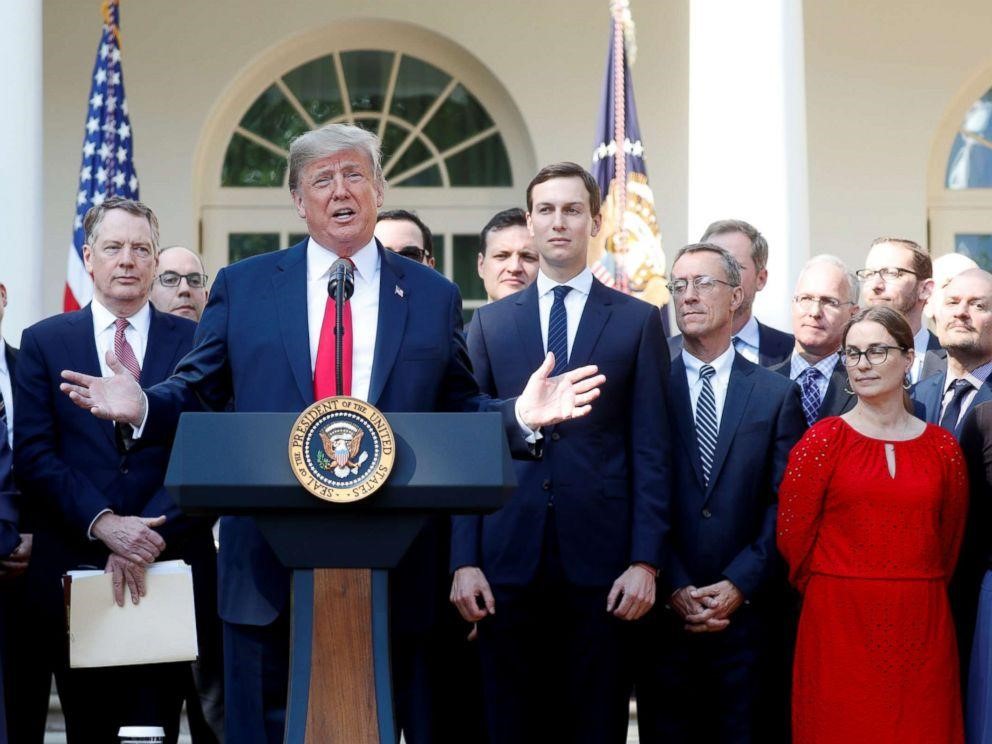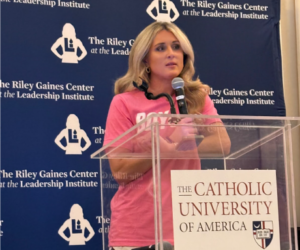New Name for NAFTA
By Alex Santana
Courtesy of ABC News
Hours before an October 1st deadline, the United States, Canada, and Mexico agreed upon a new trade deal to replace the North American Free Trade Agreement (NAFTA). The new deal will be known as the United States–Mexico–Canada Agreement (USMCA) and replaces a 20-year-old agreement dating back to the administrations of U.S. President Bill Clinton, Mexican President Carlos Salinas de Gortari, and Canadian Prime Minister Brian Mulroney. At a Monday morning press conference at the Rose Garden outside the White House, President Donald Trump began his remarks by saying, “we have successfully completed negotiations on a brand new deal to terminate and replace NAFTA and the NAFTA trade agreements with an incredible new US-Mexico-Canada Agreement.”
Surrounded by members of his administration such as Vice President Mike Pence, Secretary of the Treasury Steven Mnuchin, Secretary of Commerce Wilbur Ross, U.S. Trade Representative Robert Lighthizer, and his senior advisor and son-in-law Jared Kushner, Trump described NAFTA as the worst trade deal ever made. He began his speech by saying how NAFTA had, “lost vast amounts of money, and lost 4.1 million manufacturing jobs, and 1 in 4 auto jobs. Lost about 25 percent of our auto jobs — even more than that.”
According to a Bloomberg report, under USMCA, “To qualify for tariff-free access, 75 percent of the content of imports must be produced within North America, up from 62.5 percent under NAFTA; in addition, 40 percent of the content must be attributable to workers making at least $16 an hour.”
Regarding the dairy market and farming, Business Insider reports that the United States, “will be able to export the equivalent of 3.6% of Canada’s dairy market, up from the existing level of about 1%. This is slightly above the 3.25% market access Canada would have given the US as part of the Trans-Pacific Partnership, which Trump pulled the US out of last year.” Business Insider also reports that, “Canada will get rid of the ‘Class 7’ pricing system that was seen as disadvantaging US farmers.”
During a press conference in the Canadian capital of Ottawa, Prime Minister Justin Trudeau stated, “Free and fair trade in North America, a trading zone that accounts for more than a quarter of the world’s economy with seven per cent of its population, is in a much more stable place than it was yesterday. We now have a path forward.”
The office of the U.S. Trade Representative states USMCA will increase dairy, poultry, and egg exports to Canada. In return, Canada will be able to trade more dairy and peanut products.
The current dispute-settlement system in NAFTA will continue while the investor-state dispute settlement system, “will be phased out for the US and Canada, while certain industries such as energy will be able to bring cases against Mexico,” according to Business Insider. The dispute-settlement system, supported by Canada, “allows member countries to bring grievances against other members over allegations of unfair trading practices.”
In a statement released Monday, the White House said USMCA, “includes a modernized, high-standard chapter that provides strong protection and enforcement of intellectual property rights, as well as, the strongest measures on digital trade of any agreement. This includes 10 years of data protection for biologic drugs and a large scope of products eligible for protection.”
A CNN article revealed that, “negotiators stitched into the updated treaty new terms of the deal, agreeing to keep the trade pact for 16 years, unless all three countries agreed to extend it.” Because of this the, “deadline could be extended far out into the future, if all three countries agreed to either renew or renegotiate the trilateral trade pact, and all three countries, “will be required to meet every six years to decide whether to do so.”
Mexico’s president-elect, Andres Manuel Lopez Obrador, is supportive of the new deal. His designated Secretary of Foreign Affairs, Marcelo Ebrard, stated, “The culmination of this negotiation process promotes certainty in the financial markets and investment and job creation in our country.”
UMSCA still has to be voted on in the U.S. Senate, and Senate Majority Whip John Cornyn (R-TX) stated after learning about the new trade agreement, “I know people are still going through the details, but it’s not a foregone conclusion that it will get confirmation by the Senate.” A vote on the new agreement will most likely occur sometime in 2019, after the November 2018 elections, in which Democrats could take one, or even both, chambers of Congress.








